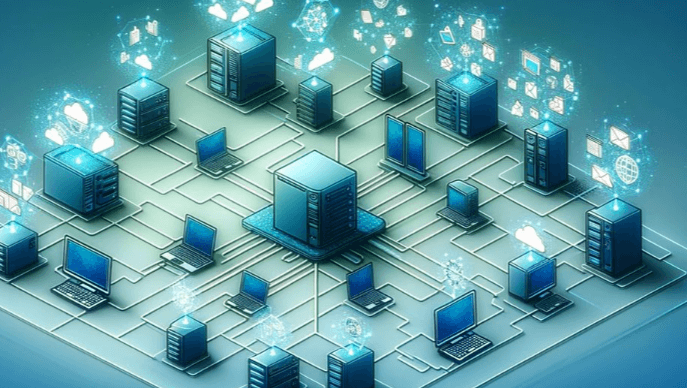How are edge computing and IoT converging to reshape data processing and real-time analytics?

Introduction
The integration of edge computing and the Internet of Things (IoT) is transforming how data is processed and analyzed in real time. This convergence is paving the way for advancements across multiple sectors, enhancing efficiency, reducing latency, and enabling smarter decision-making. In this article, we will explore the various aspects of this convergence and how it is reshaping data processing and real-time analytics.
Understanding Edge Computing
Edge computing refers to the practice of processing data near the source of data generation, rather than relying on centralized data centers. This approach minimizes latency and reduces the load on network resources.
The Role of IoT in Modern Technology
IoT involves the interconnection of physical devices, vehicles, buildings, and other objects embedded with sensors and software to collect and exchange data. IoT enables a vast network of devices to communicate and share information seamlessly.
The Synergy Between Edge Computing and IoT
The combination of edge computing and IoT enhances the capabilities of both technologies. IoT devices generate massive amounts of data, and edge computing provides the necessary infrastructure to process this data quickly and efficiently.
Benefits of Combining Edge Computing and IoT
The convergence of edge computing and IoT offers numerous benefits, including:
- Reduced latency
- Enhanced data security
- Improved bandwidth efficiency
- Real-time data processing
- Scalability and flexibility
Challenges in Integrating Edge Computing and IoT
Despite the benefits, there are challenges in integrating these technologies, such as:
- Complexity of deployment
- Data management issues
- Security concerns
- Interoperability between devices and platforms
Real-Time Data Processing at the Edge
Edge computing enables real-time data processing by handling data locally at the edge of the network. This reduces the time it takes to analyze data and make decisions, which is crucial for applications requiring immediate responses.
Impact on Industries
The convergence of edge computing and IoT is making a significant impact on various industries, including:
- Healthcare
- Manufacturing
- Transportation
- Retail
- Energy
Healthcare Innovations
In healthcare, edge computing and IoT are improving patient care through real-time monitoring, predictive analytics, and faster response times. Wearable devices and smart sensors collect patient data, which is processed at the edge to provide timely insights.
Manufacturing Advancements
Manufacturing processes are becoming more efficient with the use of edge computing and IoT. Real-time monitoring and analytics help in predictive maintenance, reducing downtime, and optimizing production lines.
Transforming Transportation
In transportation, these technologies are enhancing vehicle-to-everything (V2X) communication, improving traffic management, and enabling autonomous driving. Real-time data from IoT devices is processed at the edge to ensure safety and efficiency.
Retail Revolution
The retail sector is leveraging edge computing and IoT for personalized shopping experiences, inventory management, and supply chain optimization. Real-time analytics help retailers understand customer behavior and preferences.
Energy Sector Enhancements
In the energy sector, edge computing and IoT are optimizing energy distribution, managing smart grids, and enhancing predictive maintenance of equipment. This leads to more efficient and reliable energy systems.
Data Security and Privacy Considerations
With the increased data generation from IoT devices, ensuring data security and privacy is critical. Edge computing helps in securing data locally, reducing the risk of data breaches during transmission.
Future Trends in Edge Computing and IoT
The future of edge computing and IoT looks promising with advancements such as:
- Integration with artificial intelligence (AI)
- Enhanced machine learning (ML) capabilities
- Development of 5G networks
- Expansion of smart cities
- Growth of autonomous systems
Conclusion
The convergence of edge computing and IoT is reshaping data processing and real-time analytics, driving innovation across various sectors. This integration enhances efficiency, reduces latency, and enables smarter decision-making, positioning these technologies as pivotal in the digital transformation journey.
FAQs
How does edge computing reduce latency? Edge computing processes data close to the source, minimizing the time it takes for data to travel to a central server and back, thus reducing latency.
What are the benefits of real-time data processing? Real-time data processing enables immediate analysis and decision-making, which is crucial for applications requiring prompt responses, such as autonomous vehicles and healthcare monitoring.
How does IoT improve industrial operations? IoT improves industrial operations by providing real-time data on equipment performance, enabling predictive maintenance, reducing downtime, and optimizing production processes.
What are the security challenges with IoT and edge computing? Security challenges include managing the vast amount of data generated by IoT devices, ensuring secure communication between devices, and protecting data processed at the edge from cyber threats.
How are smart cities benefiting from edge computing and IoT? Smart cities benefit from these technologies through improved traffic management, efficient energy use, enhanced public safety, and better waste management systems, all driven by real-time data analytics.
What role does 5G play in the convergence of edge computing and IoT? 5G provides the high-speed, low-latency network required for efficient communication between IoT devices and edge computing infrastructure, facilitating real-time data processing and enhanced connectivity.





